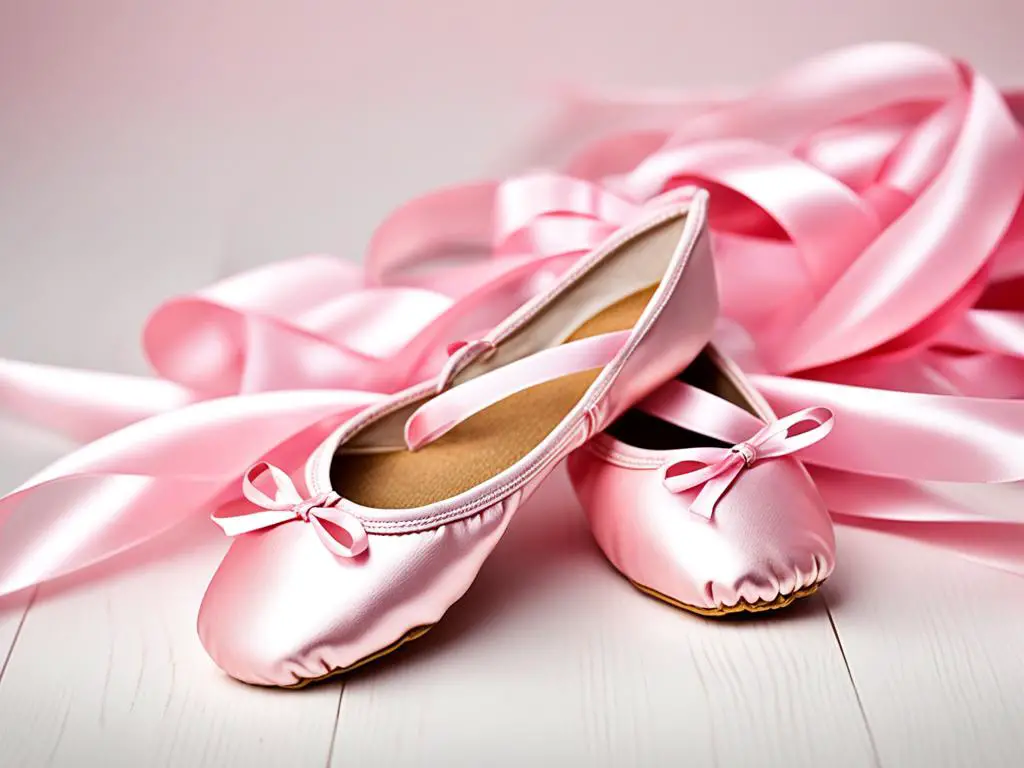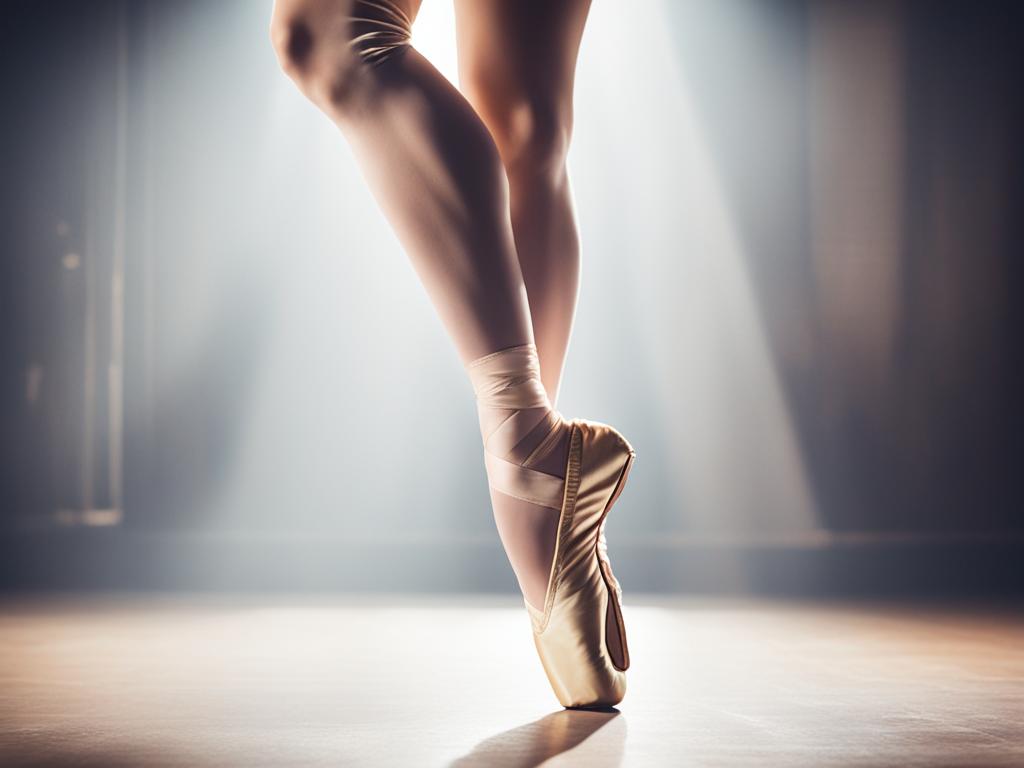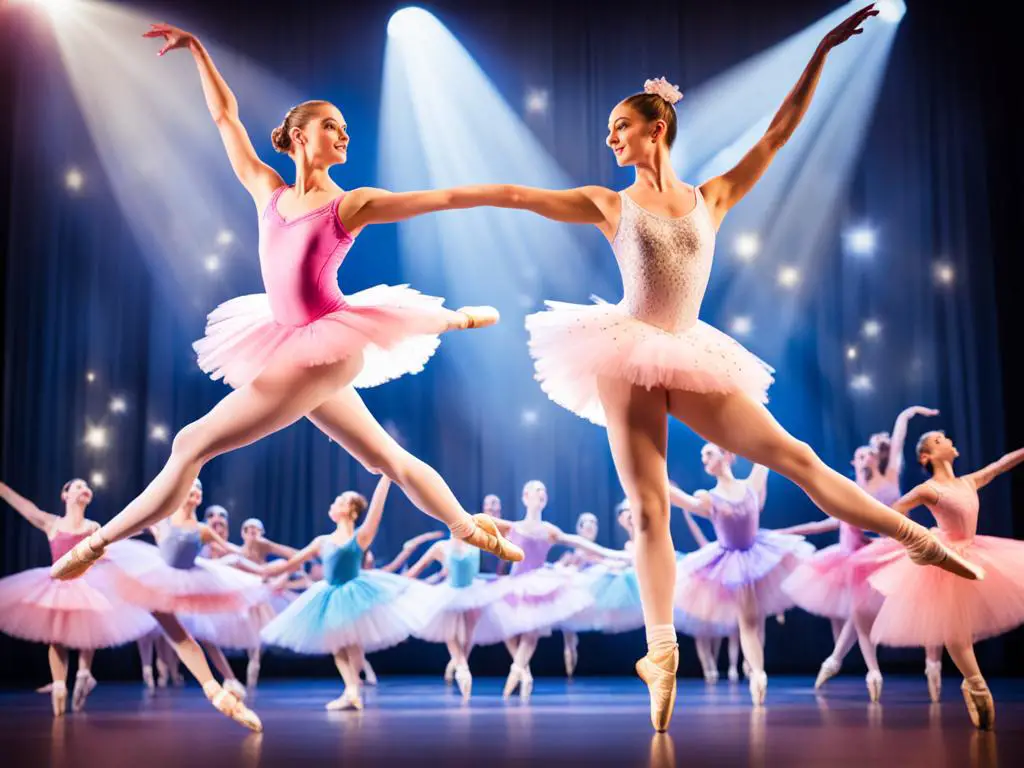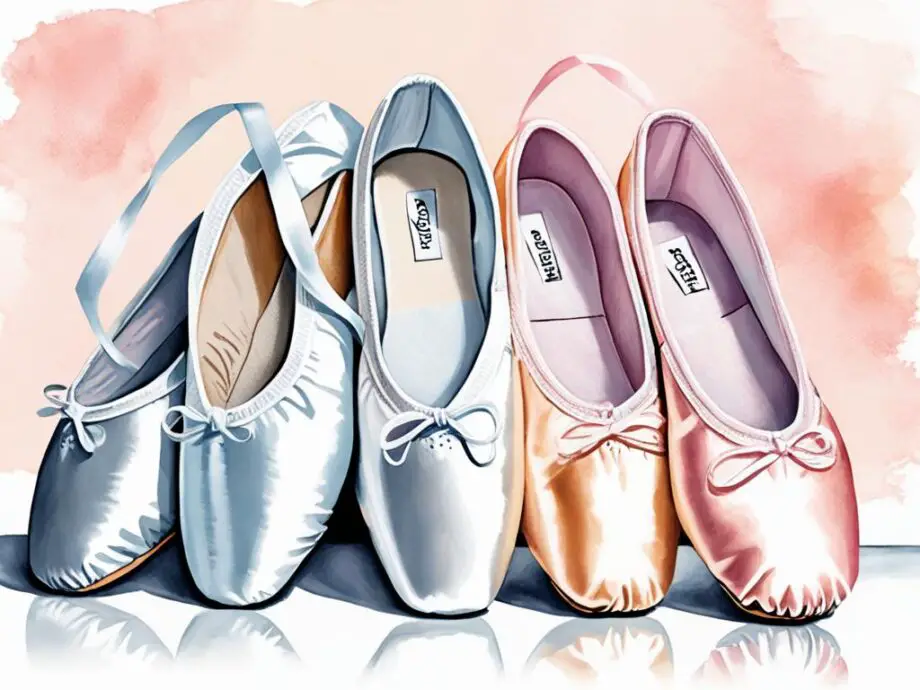Welcome to our comprehensive guide on pointe shoes and ballet slippers! Whether you are a seasoned dancer or just starting out, finding the perfect ballet footwear is essential for optimal performance and comfort. In this article, we will delve into the key differences between pointe shoes and ballet slippers, providing you with all the information you need to make the best choice for your ballet journey.
Key Takeaways:
- Understand the differences between pointe shoes and ballet slippers
- Consider the specific features and benefits of each type of dance shoe
- Evaluate your own dance style, skill level, and foot structure to choose the best footwear for you
- Explore popular ballet slipper brands and their unique design elements
- Learn about the artistry and technical aspects of dancing en pointe with pointe shoes
Understanding Ballet Slippers
When it comes to ballet footwear, ballet slippers are an essential component of a dancer’s ensemble. Designed specifically for ballet dancers, these lightweight and flexible shoes offer both comfort and support to enhance a dancer’s performance. In this section, we will delve into the world of ballet slippers, exploring their design features and how they contribute to the artistry of ballet.

Ballet slippers are crafted with precision to provide dancers with optimal flexibility and maneuverability. They feature a soft, thin sole made from high-quality materials such as leather, canvas, or satin, allowing dancers to feel the floor beneath them and execute precise movements. Additionally, the snug fit of ballet slippers ensures proper foot alignment, enabling dancers to maintain balance and stability.
One of the key design elements of ballet slippers is the absence of a heel, which allows for seamless weight transfer during ballet movements. This enables dancers to effortlessly transition between positions, showcasing grace and fluidity in their routines. The lack of a heel also promotes foot articulation, enabling dancers to point their toes and create beautiful lines.
“Ballet slippers are like second skin for dancers, providing the necessary support and freedom of movement to execute precise ballet techniques.”
There are numerous brands that offer ballet slippers tailored to dancers’ unique needs. Here is a review of some popular ballet slipper brands:
| Brand | Features |
|---|---|
| Capezio | Offers a wide range of ballet slippers with various sole materials and designs, catering to different dancer preferences. |
| Bloch | Known for their exceptional quality and durability, Bloch ballet slippers provide comfort and support during intense training sessions. |
| Grishko | Grishko ballet slippers are renowned for their attention to detail and customizability, ensuring a perfect fit for dancers of all foot types. |
| Sansha | Offering a balance between affordability and quality, Sansha ballet slippers provide dancers with a reliable and comfortable option. |
Now that you have a better understanding of ballet slippers, you can choose the best shoes for your ballet journey. In the next section, we will explore the magic of pointe shoes, another essential footwear in ballet.
The Magic of Pointe Shoes
In the world of ballet, pointe shoes hold a special place. These unique and elegant footwear pieces are an essential part of a dancer’s journey to mastering the art of ballet. Pointe shoes allow dancers to perform breathtaking movements while dancing en pointe, showcasing their grace and strength. Let’s explore the magic behind pointe shoes and uncover what makes them a must-have for ballet dancers.
The Unique Characteristics of Pointe Shoes
Pointe shoes are specifically designed to support dancers while dancing on their toes. These shoes feature a stiff and structured toe box made of layers of fabric and glue, providing the necessary support to distribute the dancer’s weight evenly across the toes. The shank, a rigid insole, adds additional reinforcement, allowing the dancer to stay balanced while executing intricate footwork. The satin or canvas exterior of pointe shoes adds a touch of beauty and elegance, enhancing the overall visual presence on stage.

The Purpose of Pointe Shoes in Ballet
Pointe shoes enable dancers to perform en pointe, where they dance on the tips of their toes, creating an illusion of weightlessness. This technique is often seen in classical ballet performances and is an iconic representation of the art form. Pointe work demands both physical strength and technical precision from dancers, allowing them to execute challenging moves with grace and poise. The artistry and beauty of pointe work continue to captivate audiences worldwide.
The Challenges and Benefits of Pointe Shoes
Dancing in pointe shoes requires immense dedication, discipline, and rigorous training. It takes years of practice and proper technique to build the strength and control needed to dance en pointe safely. The pressure on the toes and feet can be strenuous, and dancers often need to condition their bodies to withstand this demand.
“Dancing en pointe is like a delicate balance between pain and beauty. It takes a tremendous amount of effort and perseverance to perfect the art of pointe work, but the feeling of weightlessness and the ability to create breathtaking moments on stage is truly magical.” – Natalia Makarova, Prima Ballerina
However, the rewards of dancing en pointe are immeasurable. Pointe work allows dancers to express themselves fully, bringing to life the nuances and emotions of ballet choreography. It enhances a dancer’s ability to create stunning lines, execute impressive turns, and showcase their technical prowess. The artistry and ethereal quality of pointe work mesmerize both the dancers and their audiences, making it a cherished experience for all involved.
Selecting the Right Pointe Shoes
Choosing the right pointe shoes is crucial, as it directly impacts a dancer’s performance and comfort. Factors such as foot type, strength, skill level, and personal preferences play a significant role in determining the ideal pointe shoes for each dancer. It is essential to consult with a trained professional, such as a ballet teacher or a pointe shoe fitter, who can provide guidance and ensure the correct fit and style.
A well-fitted pointe shoe should offer adequate support, prevent discomfort or pain, and allow the dancer to execute movements with ease. Dancers should also consider the flexibility and durability of the shoe to ensure longevity during rigorous training and performances.
By selecting the right pointe shoes and mastering the art of dancing en pointe, ballet dancers can push the boundaries of their craft and achieve extraordinary feats. Pointe shoes unlock the door to a world of magic, where dancers can explore the heights of their artistry and create awe-inspiring moments on stage.
Choosing Between Pointe Shoes and Ballet Slippers
When it comes to ballet footwear, dancers often find themselves deciding between pointe shoes and ballet slippers. Understanding the key differences between these two options is crucial in making an informed choice. In this section, we will compare and contrast pointe shoes and ballet slippers, considering various factors to help you find the best shoes for your ballet journey.
Factors to Consider
When choosing between pointe shoes and ballet slippers, several factors must be taken into account. These factors include:
- Dance Style: Different styles of dance may require specific footwear. Pointe shoes are primarily used in classical ballet, whereas ballet slippers are versatile and suitable for various dance styles.
- Level of Experience: Pointe shoes are typically reserved for more advanced dancers who have developed the necessary strength and technique. Ballet slippers, on the other hand, are suitable for dancers of all levels, including beginners.
- Foot Structure: The structure of your feet plays a significant role in determining the type of footwear that will offer the best fit and support. Pointe shoes are designed to accommodate dancers with strong arches and well-aligned feet, while ballet slippers cater to a broader range of foot shapes.
- Personal Preferences: Each dancer may have their own preferences when it comes to ballet footwear. Some dancers may enjoy the challenge and artistry of dancing en pointe, while others may prefer the freedom of movement and simplicity of ballet slippers.
The Pros and Cons
Let’s take a closer look at the pros and cons of pointe shoes and ballet slippers:
| Pointe Shoes | Ballet Slippers |
|---|---|
| Pros: | Pros: |
|
|
| Cons: | Cons: |
|
|
Keep in mind that these pros and cons are general guidelines, and individual experiences may vary depending on factors such as personal preferences, foot structure, and training.
Choosing the Best Shoes for You
Ultimately, the decision between pointe shoes and ballet slippers comes down to your unique needs and aspirations as a dancer. Consider your dance style, level of experience, foot structure, and personal preferences when making this decision.
To make an informed choice, it is recommended to consult with a ballet teacher or professional dance specialist who can assess your suitability for pointe work and provide guidance based on your individual circumstances.
Remember, both pointe shoes and ballet slippers have their advantages and can contribute to your growth as a ballet dancer. Whether you choose the elegance and challenge of pointe shoes or the versatility and comfort of ballet slippers, the most important thing is to find the footwear that supports your passion and helps you dance your best.

Conclusion
In conclusion, when it comes to choosing between pointe shoes and ballet slippers, it is essential for dancers to understand the key differences and considerations. Ballet slippers offer versatility and ease of movement, making them a popular choice for dancers of all levels. They provide a comfortable and lightweight option, ideal for ballet classes and rehearsals.
On the other hand, pointe shoes unlock the authentic experience of dancing en pointe, allowing dancers to perform stunning movements with precision and grace. These shoes are specifically designed to support dancers’ weight on their toes and require a high level of skill and strength to use effectively.
The decision between pointe shoes and ballet slippers depends on factors such as a dancer’s level of skill, goals, and personal comfort. Beginners and those focusing on technique may start with ballet slippers before progressing to pointe shoes. It is important to consult with a dance instructor or a professional fitter to determine the right footwear for your specific needs.
By considering the features, differences, and guidance discussed in this article, dancers can make informed choices and find the perfect ballet shoe that supports their journey and enhances their performance.
